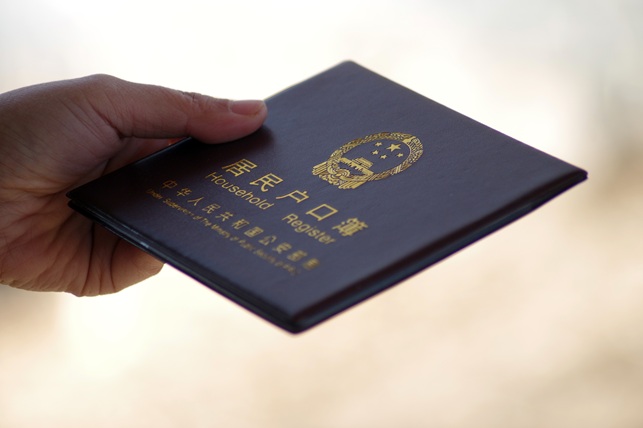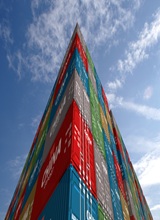Latest

How Do New Firms Shape Regional Economic Growth in China?
Loren Brandt, Gueorgui Kambourov, Kjetil Storesletten, Dec 09,
2025
Barriers to entry facing new firms are a major source of regional economic differences. Removing these barriers can play an important role in economic convergence and growth.


Why Are So Many Young Women Moving to China’s Big Cities?
Yumi Koh, Jing Li, Yifan Wu, Junjian Yi, Hanzhe Zhang, Dec 03,
2025
It’s not just about jobs. It’s also about love, status, and the marriage market.


Government reform and innovation performance in China
Min Zhang, Andrés Rodríguez-Pose, Nov 26,
2025
This column exploits the staggered implementation of government agency reforms in China to examine the impact of institutions on innovation. It finds that the regions which pioneered these reforms have reaped the rewards of reduced bureaucratic friction and enhanced regulatory efficiency, manifesting in marked gains in innovation performance. The dividends of institutional reform are most pronounced in city-regions already endowed with robust innovation infrastructure and intellectual capital.


Rural-Urban Migration and Market Integration
Dennis Egger, Benjamin Faber, Ming Li, Wei Lin, Nov 19,
2025
Reductions in rural-to-urban migration barriers have led to economic gains for both rural origins and urban destinations by reducing information frictions and facilitating the flow of goods and investments between cities and the countryside.


China’s Successful Securities Regulation to Protect Investors
Thomas Bourveau, Xingchao Gao, Rongchen Li, Frank S. Zhou, Nov 12,
2025
In emerging markets, controlling shareholders may extract private benefits at the expense of minority investors. To safeguard cash-flow rights, regulators have turned to dividend requirements, yet their rigidity risks stifling investments and growth. In China, the regulator successfully adopted an intermediate “comply-or-explain” approach to strengthen investor protection without forcing firms to forgo investments and growth.


How China’s Business Registration Reform Boosted Entrepreneurship and Productivity
Panle Jia Barwick, Luming Chen, Shanjun Li, Xiaobo Zhang, Nov 05,
2025
China’s 2014 business registration reform spurred greater market dynamism by lowering entry barriers, which increased firm turnover and allowed smaller yet more productive entrepreneurs to establish new businesses, boosting overall productivity and growth.


Paying to Pollute: How Carbon Offsets Actually Raised Emissions in China
Qiaoyi Chen, Nicholas Ryan, Daniel Xu, Oct 29,
2025
How do we cut carbon emissions without slowing economic growth? One way is through offset markets: markets to buy reductions in emissions from parties all over the world. Offsets are meant to incentivize projects that cut emissions. Instead of reducing emissions themselves, firms or countries can pay others to do so on their behalf. This trade in abatement can potentially lower the costs of bringing emissions down.


Migration,Tariffs,and China’s Export Surge
Chen Liu, Xiao Ma, Oct 22,
2025
China’s exports have increased dramatically in recent decades. We build a multi-sector spatial general equilibrium model and combine rich data sources to account for China’s export surge between 1990 and 2005 from three policy changes: China’s import tariffs, tariffs imposed on China’s exports, and barriers to internal migration in China. We find that the three policy changes jointly accounted for 30% of China’s export growth between 1990 and 2005 and that there is a positive interaction between tariff and migration policies.


Digital Dividends? Rural E-Commerce and the Urban-Rural Income Gap
Lei Wang, Yongming Sun, Oct 15,
2025
We examine the impact of China’s Rural E-Commerce Comprehensive Demonstration (RECD) project on the urban-rural income gap. Using county-level data from 2006 to 2022 and a time-varying difference-in-differences design, we find that participation in the RECD project led to a significant reduction in urban-rural income disparity. The effects were especially pronounced in less-developed regions, poverty-designated counties, and areas with weaker digital infrastructure and gains were disproportionately concentrated among rural households. These “biased” digital dividends contrast with market-driven e-commerce development, such as Taobao Villages, which tended to exacerbate inequality.


Quarters of Birth Matter for Girls: How Agricultural Seasonality Shapes Gender Inequality in China
Xuezheng Qin, Junjian Yi, Haochen Zhang, Oct 08,
2025
We find that people born in the fourth quarter tend to have better lifecycle outcomes than others in China. More importantly, this birth quarter effect is significantly larger for females than for males. Such a gendered pattern is likely driven by seasonal variations in household resources induced by agricultural seasonality, which may exert gender-differentiated effects on intrahousehold neonatal investment due to son preference. These findings have meaningful implications for the role of economic development in reducing gender inequality through the (gender-neutral) increase in household resources.

Recent
How Liberalizing Trade with China Led to a Boom in International Students in the US
Gaurav Khanna, Kevin Shih, Ariel Weinberger, Mingzhi Xu, Miaojie Yu, Aug 16,
2023
Focusing on China’s accession to the World Trade Organization, we show that Chinese cities with more exposure to trade liberalization sent more students to US universities.
Regional Variation of GDP per Head within China, 1080–1850: Implications for the Great Divergence Debate
Stephen Broadberry, Hanhui Guan, Sep 28,
2022
We provide the first regional breakdown of GDP per head for China from the Song dynasty to the Qing, so that regions of similar size can be compared between Europe and Asia to establish the timing of the Great Divergence of living standards.
Combating Cross-Border Externalities
Shiyi Chen, Joshua Graff-Zivin, Huanhuan Wang, Jiaxin Xiong, Sep 21,
2022
China implemented a pioneering policy in 2011, the Ecological Compensation Initiative (ECI), which establishes side payments between upstream and downstream provinces in the Xin’an River Basin.
Assessing and Addressing the Coronavirus-Induced Economic Crisis: Evidence from 1.5 Billion Sales Invoice
Zhuo Chen, Pengfei Li, Li Liao, Zhengwei Wang, Aug 31,
2022
We probe the effects of the COVID-19 pandemic and the subsequent containment policies on business activities in China by exploiting big data on 1.5 billion sales invoices. The average drop in sales was between 23% and 35%, depending on firm size, for the 12-week period after the Wuhan lockdown.
Industrial Land Discount in China: A Public Finance Perspective
Zhiguo He, Scott Nelson, Yang Su, Anthony Lee Zhang, Fudong Zhang, Jul 25,
2022
Local governments, which serve as monopolistic land sellers in China, face a trade-off when deciding to supply residential land versus industrial land. This trade-off is determined by the different time profiles of revenues from industrial and residential land sales, local governments’ financial constraints, and the extent of local governments’ tax revenue sharing with other levels of government.
Dollar Funding Stresses in China
Laura Kodres, Leslie Sheng Shen, Darrell Duffie, Jul 13,
2022
The need for US dollar funding during the financial stresses of March 2020, as the COVID-19 pandemic shocked markets, was evident in a number of countries (Avdjiev, Eren, and McGuire 2020; Bahaj and Reis 2020).
Serial Entrepreneurship in China
Loren Brandt, Ruochen Dai, Gueorgui Kambourov, Kjetil Storesletten, Xiaobo Zhang, Jul 06,
2022
New firms have been an important engine of growth in the Chinese economy (Brandt, Van Biesebroeck, and Zhang 2012). Drawing on data on the universe of all firms in China, we study entrepreneurship and the creation of new firms in China through the lens of entrepreneurs who operate a series of firms over their lifetime, i.e., serial entrepreneurs (SE).
An Empirical Overview of Chinese Capital Market
Grace Xing Hu, Jun Pan, Jiang Wang, Jun 29,
2022
We provide an empirical review of the Chinese capital market, focusing on the basic return and risk characteristics of its major asset classes, as well as a comparison to the US market. All major asset classes in China have significant higher volatilities than their counterparts in the US market, but they do not always yield larger returns. Small-company stocks, short-, medium-, and long-term treasury bonds outperform their US counterparts, while large stocks underperform and long-term enterprise bonds yield similar returns.
Mapping U.S.-China Technology Decoupling, Innovation, and Firm Performance
Pengfei Han, Wei Jiang, Danqing Mei, Dec 01,
2021
We develop measures for technology decoupling and dependence between the U.S. and China based on combined patent data. The first two decades of the century witnessed a steady increase in technology integration (or less decoupling), but China’s dependence on the U.S. increased (decreased) during the first (second) decade. Decoupling in a technology field predicts China’s growing dependence on U.S. technology, which, in turn, predicts less decoupling further down the road...
School Enrollment Restriction on Migrant Children and Human Capital Losses
Zibin Huang, Nov 24,
2021
In China, migrant children are at a disadvantaged and sometimes cannot enroll in public schools in migration destinations due to policy restrictions. Some migrant workers then have to leave their children behind in their hometowns, which causes the left-behind children problem. This study finds that if the enrollment restriction on migrant children is relaxed, migration of parents and children will increase, and the average human capital in the society will also increase. Low-skill families from small cities benefit most.
Institutional Sponsors
Executive Committee
Advisory Board
Editorial Board
- Laura Alfaro
- Chong-En Bai
- Panle Jia Barwick
- Thorsten Beck
- Loren Brandt
- Markus Brunnermeier
- Hongbin Cai
- Chun Chang
- Hui Chen
- Kaiji Chen
- Xilu Chen
- Lin William Cong
- Yongheng Deng
- Jun Du
- Li Gan
- Cathy Ge Bao
- Joseph Gyourko
- Zhiguo He
- Harrison Hong
- Junjie Hong
- Yongmiao Hong
- Chang-Tai Hsieh
- Dashan Huang
- Yi Huang
- Yiping Huang
- Wenxi Jiang
- Keyu Jin
- Jiandong Ju
- Andrew Karolyi
- Laura Kodres
- Hongbin Li
- Shu Lin
- Jane Yu Liu
- Laura Xiaolei Liu
- Zheng Liu
- Prakash Loungani
- Xin Meng
- Jianjun Miao
- Albert Park
- Guangyu Pei
- Lin Peng
- Nancy Qian
- Yingyi Qian
- Leslie Sheng Shen
- Kang Shi
- Yushui Shi
- Zheng Song
- Mark M. Spiegel
- Avanidhar Subrahmanyam
- Guoqiang Tian
- Cong Wang
- Jiang Wang
- Neng Wang
- Pengfei Wang
- Yong Wang
- Bin Wei
- Yi Wen
- Danyang Xie
- Daniel Yi Xu
- Lixin Colin Xu
- Zhigang Yuan
- Vivian Yue
- Tao Zha
- Bohui Zhang
- Huacheng Zhang
- Jun Zhang
- Junsen Zhang
- Tianyu Zhang
- Xiaobo Zhang
- Yongsheng Zhang
- Yaohui Zhao
- Li-An Zhou
- Ning Zhu
- Xiaodong Zhu




 Facebook
Facebook  Twitter
Twitter  Instagram
Instagram WeChat
WeChat  Email
Email 







